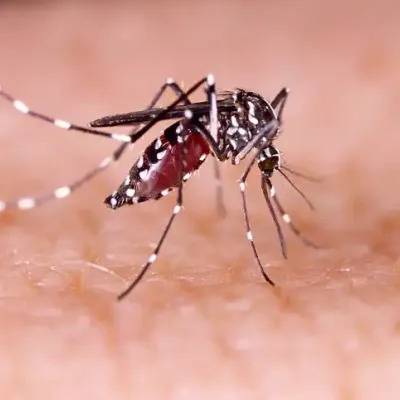About Yellow Fever Mosquito

Appearance:Dark brown to black with silver or white markings; long, segmented body; 1/8 inch in length
Region: Throughout the country, including Arizona and California, but primarily in the southeastern U.S.
Diet: Similar to other species, female yellow fever mosquitoes primarily feed on humans and other primates as blood is required to produce eggs, but they will also feed on plant nectar. Males feed on plant nectar and don’t bite. These mosquitoes are constantly active day and night, but prefer blood meals during the day.
Habitat: Tropical and subtropical climates are preferred by yellow fever mosquitoes, and they thrive in urban and suburban environments. As container-inhabiting mosquitos, they breed in unused flowerpots, old tires, gutters, rain barrels, and any discarded cans, buckets, and outdoor toys.
Threats: Like most mosquitoes, a bite can result in an itchy raised bump on the skin. The yellow fever mosquito is a vector of numerous diseases, including yellow fever, dengue fever, and chikungunya. Yellow fever is the most common and transmitted when an infected mosquito bites a person. Although not found in the United States, yellow fever can be reported when travelers return home after visiting regions of the world where it is established.
Control: Control measures are similar for all species, including removing any stagnant water such as rain barrels, flower pots, and eliminating any other source of water that is an ideal breeding spot. Prevent mosquitoes from entering your home with properly sealed doors and windows, ensuring screens are replaced if there are holes for entry.
